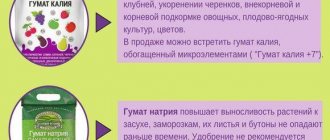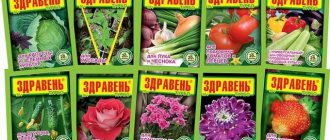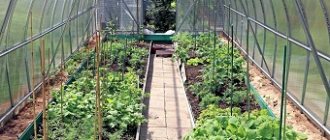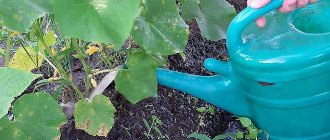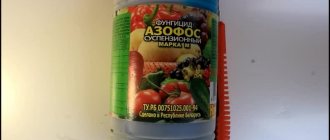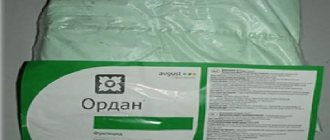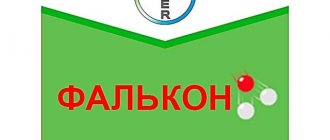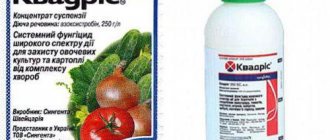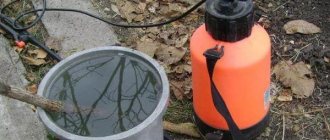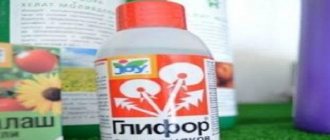For proper development and growth, garden crops need microelements. All plants get them from the soil, but often it does not contain the required amount of nutrients. Then mineral supplements come to the aid of the gardener. One of the most effective and safe fertilizers is diammofoska (DAFK). The fertilizer contains essential microelements that are necessary to support the life processes of plants. Diammofoska is used for feeding shrubs, trees, flowers, vegetables and lawns.
Diammofosk, composition and purpose of fertilizer
The main components are nitrogen, phosphorus, potassium. There are two brands of this fertilizer: diammofoska 10 26 26 and 9 25 25. Digital values determine the percentage composition of chemical elements, in the first case 10% nitrogen compounds, 26% phosphorus and 26% potassium compounds. In the second case, respectively, 9, 25 and 25 percent of these compounds.
Diammofoska – complex mineral fertilizer
In addition to the main elements, microadditives are included:
- Magnesium.
- Iron.
- Calcium.
- Zinc.
- Sulfur.
It is a powder of pinkish or red granules containing all the specified ingredients in a certain ratio. This makes it possible to know exactly how much and what is being applied to the plant, and that the correct dosage is observed. Has a high concentration of nutrients.
It can be applied to all garden and berry plants, flowers and grass lawns. This composition allows crops to receive balanced elements that accelerate their growth and proper formation.
Main characteristics
The second name for diammophos is diammonium phosphate.
Due to the presence of the ammonium form of nitrogen in its composition, the loss of the active substance due to evaporation, weathering, and leaching is minimized, and thereby the supply of nitrogen to plants is increased. The phosphorus contained in its composition has the form of oxides and is quickly absorbed not only by the soil, but also by plants. Since most of the drug is retained near the root system of plants, the use of diammophoska is most effective. Diammonium phosphate contains 26% potassium and phosphorus, and the nitrogen component accounts for the remainder. The concentration of the main components can be determined by the marking, consisting of three numbers. The first indicates the amount of nitrogen, and subsequent numbers indicate the content of phosphorus and potassium, respectively. The most common brand on sale is 10:26:26 .
In addition to these substances, diammophos also includes some microelements, for example, iron, sulfur, zinc, magnesium and others. Externally, the fertilizer is pink granules, and the acidity level can be characterized as neutral. As a result, the fertilizer can be used on acidic soils without adding lime.
The chemical must be stored in well-ventilated areas away from food products.
Impact on plants
When it enters the soil, the fertilizer breaks down into individual ions. Phosphates produce ammonium and orthophosphoric acid ions. Potassium compounds - potassium ions and sulfo group. Ammonium forms nitrates, which are absorbed by plants and soil bacteria without leaving any residue. A small amount is washed out of the soil by water.
Diammofoska is a fertilizer that begins to act quickly, almost immediately after application.
Some of the phosphates are absorbed by plants, and some remain in the soil, enriching its composition. Potassium is well absorbed by plants, but remaining in the soil, acidifies it.
This fertilizer can be used for different types of soil. It will make sandy and loamy soils fertile. It is applied for digging in the spring or autumn, and used as a top dressing during the period of plant growth.
Norms for individual crops
Although approximate application rates have already been indicated above, individual crops still have their own characteristics.
For potatoes
Again, returning to what was said, Diammofoska, when used in the garden as a fertilizer for potatoes, will increase not only the yield, but also the quality of the fruits themselves. There are two methods of application:
- When digging up the soil before planting, it is sprinkled with granules. In this case, the application rate is 20 g. per square of land;
- Fertilizer is applied directly to the holes during planting. In this case, the dosage is significantly less - 5 g. for one hole.
For tomatoes
This vegetable is cultivated in any garden. And at the same time it responds well to the application of fertilizer:
- During spring digging - 30 g. per square;
- When applied indoors, the rate is slightly higher - about 50 grams per square;
- When planting seedlings in open ground, approximately 3-5 grams are added to each bush;
- If seedlings are planted in a greenhouse, then the norm increases slightly - 5-7 grams for each bush;
For strawberries
This berry needs many elements and Diammofoska as a complex fertilizer is ideal for it. Especially if you remember that it does not accumulate in the form of toxic substances.
There are two ways to use strawberries:
- Dry. In this case, the dosage is 15-20 grams per square of soil;
- We dissolve the same amount of dry granules in a liter of water and add it under each bush after loosening the soil.
For the lawn
Not all summer residents plant vegetables on their plots. Many people use them simply as a place to relax, planting the area with lawn grass. The characteristics of diammophoska allow it to be used for feeding the green mass of the future lawn. In this case, it is used in several stages:
- In the spring, we scatter dry ammonium nitrate over the lawn area. Dosage 3-4 kg per hundred square meters of land;
- In the summer, our fertilizer is used at a dosage of 4 kg per hundred square meters. Also just scatters on the grass;
- In the fall, Diammofoska is introduced, but in smaller quantities - 2-3 kg per hundred square meters.
From all of the above, one conclusion can be drawn - the fertilizer described is complex. Suitable for use on any type of soil.
How to use diammophoska correctly
The amount of fertilizer is determined by the crop to which it will be applied. For vegetables, potatoes, flowers, fruit and berry plants, you need to add 1-1.5 tablespoons per 1 m2 of digging area. It is better to do this in spring in moist soil for better dissolution.
To feed the trees, 2 tablespoons of granules need to be buried 8cm into the soil. Place 1-2 tablespoons of granules under the bushes.
This agrochemical is used for application to any crops.
It is possible to add diammophoska to planting holes. To do this, distribute ½ teaspoon of the composition over the recess and pour the soil well.
Strawberries and ornamental shrubs are fertilized in the spring during digging and tillage. For cultivated land, about 20 g of complex fertilizer is added per square meter; for uncultivated soils, about 30 g will be required.
An important advantage of diammophoska compared to potassium fertilizers is the absence of chlorine in the composition.
This makes it possible to use it for feeding cabbage and other cruciferous crops. At the same time, the growth of green mass is enhanced, dense heads of cabbage are formed without cracking.
It is not advisable to prepare a nutrient solution from diammophoska; the phosphorus contained in it is poorly soluble. Therefore, it is better to use a dry composition and constantly keep the soil moist. It will be gradually absorbed by plants, which will receive constant nutrition.
Using fertilizer in places where the soil is not sufficiently moistened, it is applied to the digging depth. On wet lands, the composition is scattered over its surface and leveled with a rake.
The drug is good for feeding indoor plants. Take 2 g of the substance and dissolve it in a liter of water. We water the flowers with this solution at intervals of 15 days.
For potatoes and other vegetables, as well as for strawberries and ornamental crops, the main application of fertilizer is made at the time of spring digging
We fertilize the lawn with this mixture. In the spring we scatter it over the entire surface at the rate of 4 kg per 10 m2. In summer, repeat fertilizing at the rate of 4 kg per 100 m2. Autumn fertilizing will be 2 kg per hundred square meters, since the lawn does not need nitrogen in the fall; a composition with a lower content is used.
When adding diammophoska to the soil, there is no need to add other mineral fertilizers. A good effect is achieved when combined with organic fertilizers, chicken manure or mullein.
Instructions for use
No matter how good the fertilizer is, you still need to use it, as the rules require it. According to them, this should be done as follows:
- It was said above that fertilizer is applied to the soil either in spring or autumn before planting. The order is as follows - 1 tablespoon per square of land. After the fertilizer is applied to the soil, it must be carefully dug up;
- To fertilize fruit trees and shrubs, a much smaller dosage is used - no more than two teaspoons per square of land;
- To feed vegetable crops, 1-2 teaspoons per square of land is enough.
Diammofoska is suitable for fertilizing not only garden crops, it can also be used as a top dressing for indoor plants. To do this, you need to make a working solution - dissolve 1-2 grams of dry substance in a liter of water. We water indoor flowers with this solution once every two weeks.
To achieve the effect of using fertilizer faster, it is recommended to moisten the soil after applying diammofoska.
Read also: Blueberry leaves: beneficial properties and contraindications, reviews
If you want to constantly have a good harvest, then fertilization must be done systematically - in spring and autumn. The effectiveness of fertilizer can be increased by combining it with other types of fertilizers. For example, in the spring it should be applied together with organic materials - chicken droppings or manure, but in the fall it is best to combine it with mineral ones.
Advantages
One of the most important advantages of fertilizer is the balance of its composition in each granule. Any volume of it will contain a certain, specified amount of ingredients.
- This is a universal fertilizer, suitable for any soil and different plants, and has a wide range of effects on them.
- Increases the productivity of garden plants, improves the quality of their fruits and seeds, makes them resistant to drought and disease.
- Increases shelf life and preservation of fruits, especially good for potatoes.
- It is not a particularly harmful chemical and does not accumulate in fruits and roots.
Diammofosk is a fast-acting chemical fertilizer. This is explained by the fact that nitrogen takes the form of ammonium. The oxygen content breaks down phosphorus, allowing it to quickly be absorbed and distributed in the soil.
Reviews from gardeners
A universal fertilizer that can be applied to almost all crops. I use it when planting potatoes and tomatoes.
Contains all substances necessary for plants. At first I used diammofoska when planting potatoes, and now also tomatoes. It seemed to me that the potatoes taste better and are stored well until the next harvest.
I have been using diammophos for a long time and am completely satisfied with the results. His neighbor at the dacha recommended it to me. He applies it to all crops, but I don’t use it only for cucumbers. I can’t speak about the taste, but the potatoes definitely last longer.
Safety measures during work and first aid for poisoning
When working with diammofosk, as with any chemical composition, you must be careful. First of all, we protect the respiratory system with a respirator or gauze bandage; to protect our hands and body, we use mittens and thick clothing. After working with fertilizer, thoroughly wash your hands with soap.
If dust gets into your mouth, you need to rinse it and your throat. If the chemical is ingested, drink plenty of water and induce vomiting to prevent poisoning. If you feel unwell, you should consult a doctor.
The shelf life of diammofosk is 6 months
This mixture is not a fire hazard or explosive. It must be stored in airtight packaging, in places where children or animals cannot reach them. Storage temperature is from 0 to 30 degrees, the room should not be humid. Shelf life is 6 months from the date of release.
The packaging must have a mark indicating the date of manufacture of the drug.
If you want to get a good harvest from your garden crops, you need to help them. The use of complex chemical compositions containing basic nutrients for feeding will contribute to their growth and development . Diammofoska is definitely suitable for this purpose.
Action of components
Nitrogen is needed by cultivated plants for the growth of vegetative mass and the formation of flower buds. Its deficiency causes premature yellowing and falling of leaves, and a decrease in the intensity of crop development. They experience a special need for nitrogen in the initial growing phases, when entering the period of full growth.
Among the components of diammophoska there are no nitrates that can accumulate in the soil and crops. Nitrogen is contained in the preparation in ammonium form (this is why the alternative name for diammophoska is diammonium phosphate), which is easily absorbed by crops. This form reduces the loss of nitrogen due to moisture, strong wind and evaporation.
Phosphorus influences the formation of plant cells, participates in metabolic processes, and promotes cell reproduction and respiration. When it is deficient, the foliage of the cultivated plant becomes deformed and acquires a purple color.
In the composition of diammophoska, phosphorus is in the form of P2O5 oxides. When the fertilizer comes into contact with the soil, phosphates break down faster and become available to plants. This circumstance allows the drug to be used at any time of the year, in contrast to pure phosphorus, which penetrates the soil less well and is therefore applied only in the autumn.
Potassium is involved in the delivery of nutrients and elements to the root system of plants. This allows not only to improve the general condition of plants, but also to increase their resistance to abiotic and biotic environmental factors.
This drug is present in significant quantities in the composition of diammofoska, as a result of which some of the substances of the sulfo group and potassium ions can accumulate in the soil. The result of this is an increase in soil acidity.
